Ever stood in the kitchen, holding some weird plastic wrapper, and wondered, “Can this go in the recycle bin, or am I just wishful thinking?” You’re not alone. Turns out, a surprising amount of the plastic we use every day is totally banned from recycling centers. So tossing it in the blue bin isn’t just pointless—it actually messes up the whole recycling process.
If you thought all plastics with a little triangle logo could be recycled, brace yourself. Some plastics just can’t be melted down or sorted by your local facility, no matter how much you wish they could. We’re talking about certain food wrappers, chip bags, foam containers—the ones that usually wind up in landfill because they’re impossible (or just not profitable) to recycle.
This isn’t just a recycling center problem. As a dad, I’ve seen my son Arjun’s school lunches come packed in so many different plastics it gets confusing fast. If you want to avoid sending the wrong stuff to the landfill, it helps to know which plastics don’t stand a chance in the recycling game. And more importantly—what you can do about it.
- Why Are Some Plastics Not Recyclable?
- Common Non-Recyclable Plastics to Watch Out For
- The Science: What Makes Plastic Hard to Recycle
- Smarter Choices: Tips for Reducing Unrecyclable Plastic
Why Are Some Plastics Not Recyclable?
Here’s the reality—recycling isn’t magic. Not everything that looks like plastic belongs in the recycling bin. It all comes down to chemistry and technology. Some plastics have a chemical structure that can handle being melted and reshaped, but others just fall apart or mix with other stuff, making reuse nearly impossible.
If you ever looked at the recycling logo and thought it meant “always recyclable,” hate to break it to you, but it’s just a resin code. If recycling centers don’t have the right machines for certain plastics—or it costs too much—they just trash it. With thousands of types of plastics out there, only a handful make the cut for local recycling programs.
- Mixed Materials: Stuff like chip bags and some frozen food containers use layers of plastic and metal together. There’s no easy way to pull those materials apart, so they can’t be recycled.
- Dirty Plastics: If your plastic is covered in food or grease (think pizza boxes or yogurt lids), most facilities will trash it. Cleaning that stuff is just not worth their time or water bills.
- Certain Types: Thermoset plastics—like those used in two-part epoxy glue or older electronic casings—change permanently when set. They won’t melt or reshape, so they’re off-limits for recycling.
Another thing—sometimes it’s all about business. If nobody wants to buy a certain kind of recycled plastic, your local facility won’t bother processing it. Using a plastic recycling bin doesn’t make these business or science problems disappear. That’s why it’s super important to know which plastics your city will actually take, so you don’t jam up the whole sorting process or contaminate a batch that could have been recycled.
Common Non-Recyclable Plastics to Watch Out For
Let’s break it down. Some plastics just aren’t welcome at your local recycling center. Doesn’t matter if they have the recycling symbol or not, these materials either can’t be processed, gum up the machines, or just aren’t worth the cost. Here are the obvious culprits:
- Plastic recycling code #3 (PVC – Polyvinyl Chloride): Used in pipes, shower curtains, and some toys. Not accepted because it contains chlorine and sometimes harmful additives.
- Plastic film and wraps: Think grocery bags, bread bags, and those plastic wraps around multi-packs. These can’t go in curbside bins since they clog up sorting machines fast.
- Styrofoam (Polystyrene or code #6): Coffee cups, takeout containers, packing peanuts. Super light, takes forever to break down in a landfill, and is rarely recycled—less than 1% gets collected.
- Chip bags and snack wrappers: Most are made from layers of plastic and aluminum fused together, which recycling tech can’t sort apart.
- Colored plastic cups and plates: The dyes and additives make it too hard to recycle into new products.
- Compostable or biodegradable plastics: Sounds green, but these need special facilities not found everywhere. Into the landfill they go if you toss them in regular bins.
Here’s a quick cheat sheet on what typically doesn’t get recycled in most US curbside programs:
| Plastic Type | Common Uses | Recycling Rate (USA) |
|---|---|---|
| PVC (code #3) | Pipes, toys, blister packs | <1% |
| Plastic Wraps & Bags | Shopping bags, food packaging | <5% |
| Polystyrene (code #6) | Foam cups, takeout containers | <1% |
| Multilayer Wrappers | Chip packets, granola bar wrappers | Almost 0% |
| Colored Plastics | Party cups, plates | Low/Not tracked |
| Compostable Plastics | Cutlery, bags, cups (bioplastics) | Not recyclable curbside |
If you want to make your kitchen’s waste sorting a little easier, avoid these materials when you can. It’ll keep your recycling clean and boost the odds that what you do send out actually gets reused.
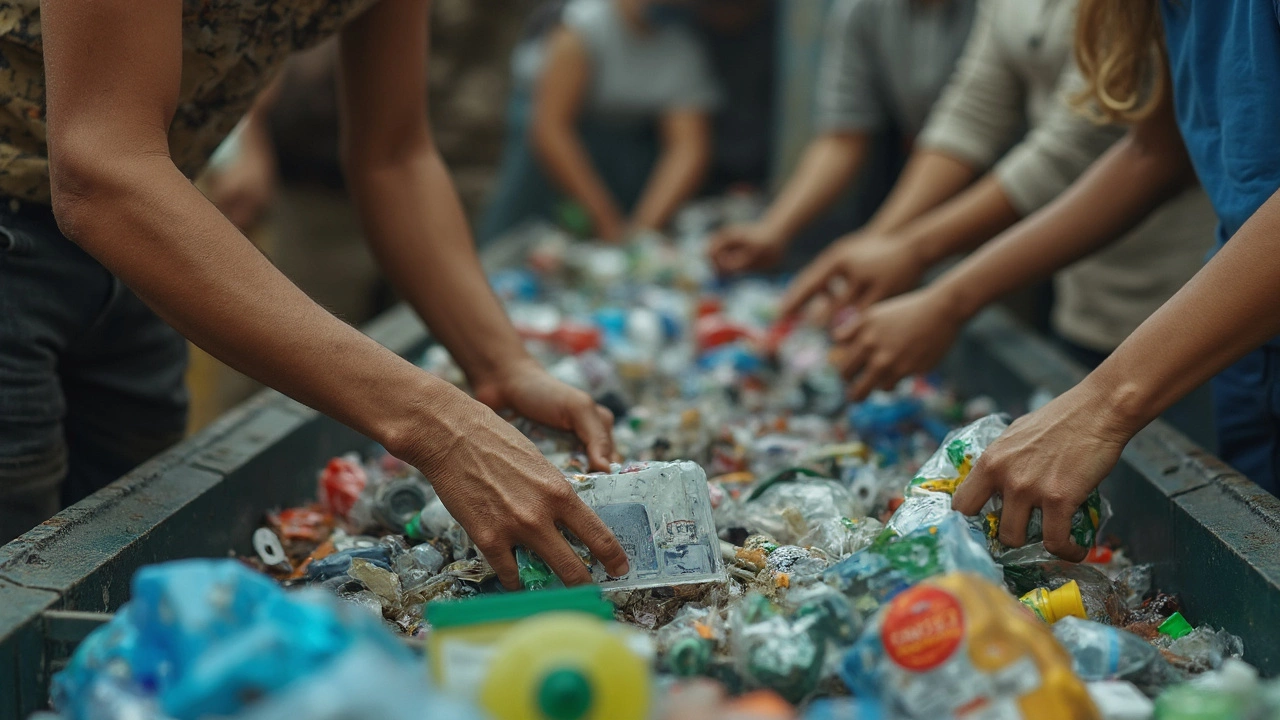
The Science: What Makes Plastic Hard to Recycle
Not all plastics play by the same rules. What makes one plastic bottle easy to toss in the blue bin and another almost impossible to recycle? It’s all about the chemistry and the way those plastics are made. Here’s the deal: plastics are made from different chemical recipes, called polymers. Some are designed for easy melting and shaping. Others? Not so much.
Recycling works best when things are simple. But the world of plastics likes to complicate things. Single-use plastics, like food wrappers and chip bags, often combine several layers of different materials. That means recycling centers can’t separate them or melt them down like a plain water bottle or a milk jug. Instead, they just end up in the trash.
Check out why some common plastics can’t easily be recycled:
- Plastic recycling relies on sorting. Some plastics look alike but are totally different. Mix-ups mess up batches and can even break machines.
- Thermoset plastics (like those in some kitchenware and electrical parts) can’t be melted again. Once they’re formed, they’re stuck that way.
- Some plastics have added chemicals for flexibility or color that make recycling too expensive or even unsafe.
- “Dirty” plastics—think greasy pizza boxes or stained yogurt tubs—are a pain to clean and often get tossed out.
Let’s get into the numbers. Each plastic has a little code—those numbers inside the triangle logo—that tells you a lot. Here’s a handy comparison:
| Plastic Type (Resin Code) | Common Use | Recyclable? |
|---|---|---|
| PET (1) | Water/Soda Bottles | Yes (widely recycled) |
| HDPE (2) | Milk Jugs, Shampoo Bottles | Yes (widely recycled) |
| PVC (3) | Pipes, Window Frames | No (rarely recycled) |
| LDPE (4) | Plastic Bags, Squeeze Bottles | No (limited programs) |
| PP (5) | Yogurt Cups, Bottle Caps | Sometimes |
| PS (6) | Foam Cups, Meat Trays | No (almost never recycled) |
| Other (7) | Mixed/Unknown | No (not recyclable) |
The crazy part? Only about 9% of plastic ever made gets recycled, according to recent data. The rest ends up burned, in a landfill, or floating around in nature. If you want to do your part, keep an eye out for resin codes and stick to plastics that your local recycling program accepts—usually #1 and #2. Everything else is better off avoided if you can help it.
Smarter Choices: Tips for Reducing Unrecyclable Plastic
If you want to make a dent in unrecyclable plastic, it’s all about your day-to-day habits. Most people don’t realize just how many items, from food wrappers to takeout containers, get tossed every week and never see a recycling plant. Here are some ways you can cut down on these hard-to-recycle plastics without feeling like you’re making your life harder.
Plastic recycling isn’t just about throwing stuff in a different bin. You want to cut down on stuff that won’t get recycled in the first place. Here’s what actually works, according to folks working in waste management and the science behind plastic types:
- Look for alternatives before you buy. Snack bags, chip wrappers, and polystyrene foam trays almost always wind up in landfill. Go for snacks in cardboard, or use reusable containers for lunches. I swapped Arjun’s usual yogurt tubes for those bigger tubs and reusable cups—it’s less waste and more bang for your buck.
- Check local recycling rules. Don’t trust the symbol on the bottom. Each city’s recycling program is different. Some won’t touch clamshell containers or certain plastics even if they have the triangle symbol. Double-check your local guidelines online if you’re unsure.
- Skip the single-use stuff. Straws, cutlery, and takeout boxes are classic troublemakers. Many cafes will fill your travel mug, and lots of restaurants are happy to put your takeout in your own container if you ask. It feels awkward the first time, but it gets easier.
- Buy in bulk when you can. Single-serving packs mean more packaging. When you buy things in bigger packages (think: family-size cereal bags, giant tubs of pretzels), you usually end up with less waste over time.
- Say no to plastic bags and wraps. Bring your own shopping bags, and grab a few produce bags made of mesh or cotton. At my house, we keep a stash in the car so we’re never caught without them.
- Get creative with reusing. Some items (like bread bags) can double as lunch wraps or trash liners. Stretch their life a little before tossing them.
The EPA spells it out:
"Recycling only works when we keep non-recyclable plastics out of the blue bin. Make sure you know what’s accepted in your area, and always choose reuse when possible."
It’s not perfect, and sometimes pre-packed stuff is just part of life—especially with kids. But making small switches adds up. If you keep an eye out for what actually lands in your trash week after week, you’ll find your own easy wins, too.


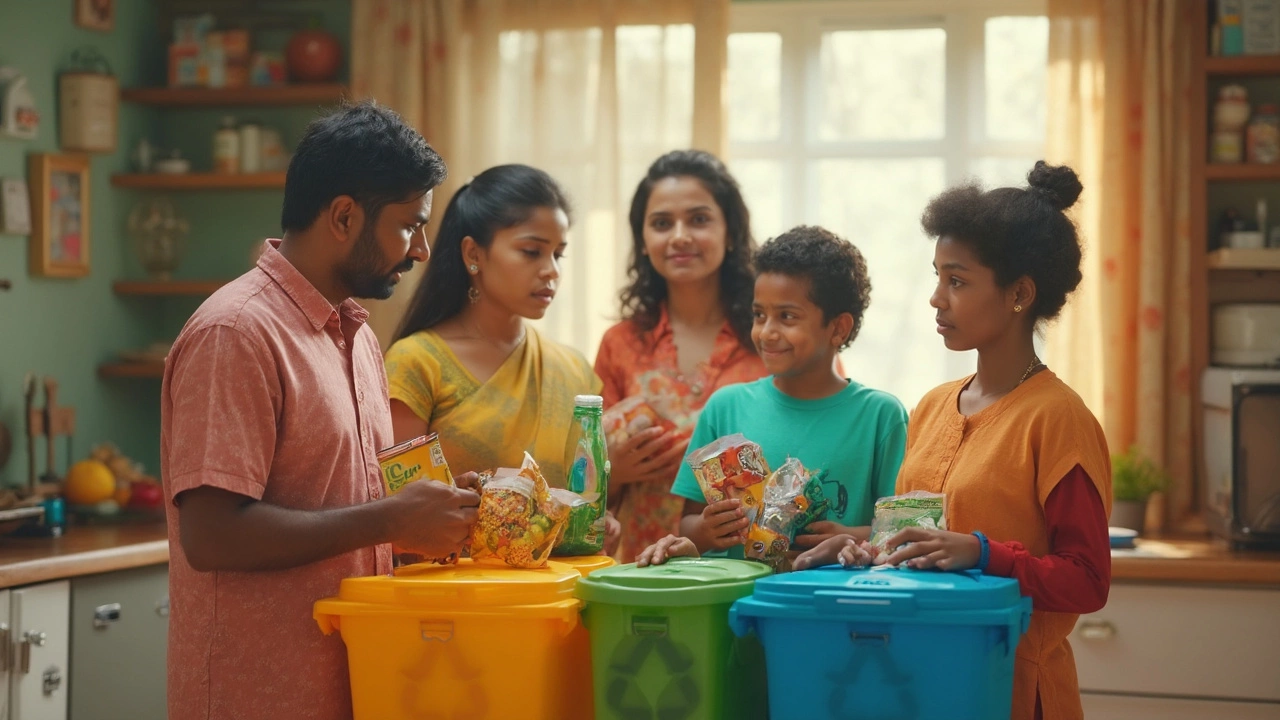

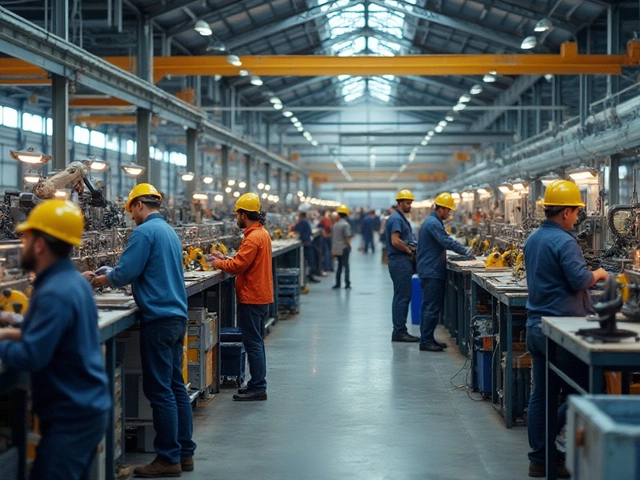
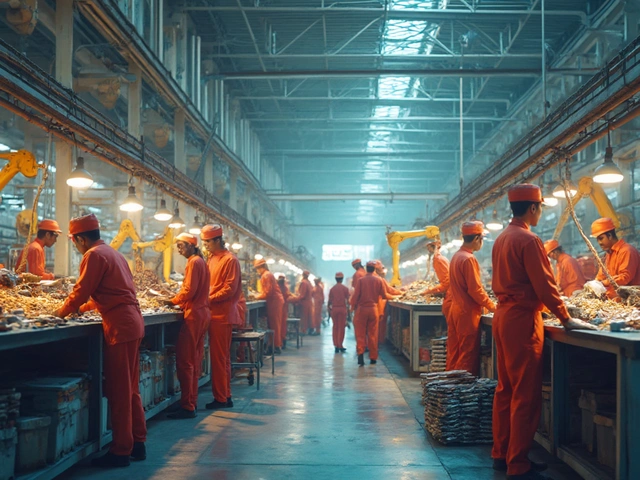
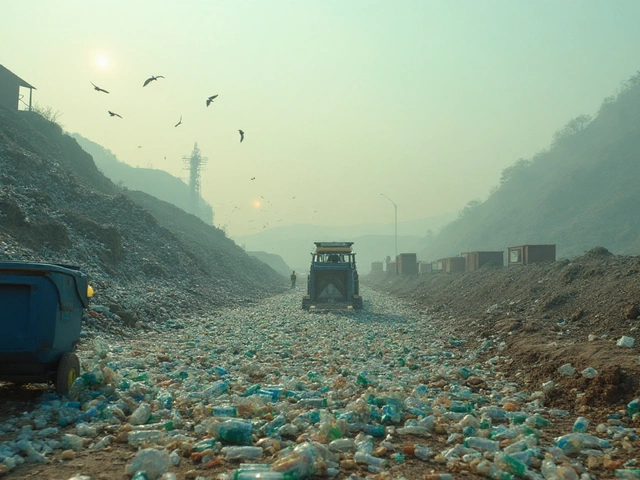

Write a comment